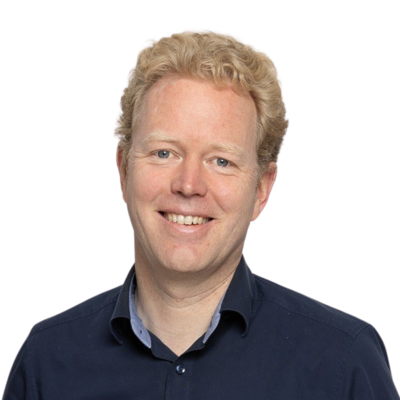
Global Talent Development at thyssenkrupp
The new TD Core talent development platform
An interview with Frank Fischer and Dr Anna Osterspey, People Development & Executives Management at thyssenkrupp
&c: At thyssenkrupp, you recently went live with a group-wide intranet platform for talent development. What were your motivations, what were the challenges you wanted to address with this?
FF: Historically, we have grown from a decentralised, heterogeneous HR landscape. HR and talent development were traditionally anchored in the business areas, business units and Group companies and were organised very differently. Against this backdrop, our CHRO described the more standardised alignment of talent development activities as a clear priority. In short, it was time to set common standards and harmonise the landscape of talent programmes in a targeted manner. If we want to identify talent at an early stage, develop it in line with requirements and ideally fill it with challenging new positions across the Group, we need a standardised talent management system as well as comparable rules, quality standards and a comprehensive set of tools and products. The platform for this is the Talent Development Core.
&c: What exactly does the TD Core contain?
FF: For us at thyssenkrupp, talent management is a triad: identify, develop, fill. The TD Core systematically addresses this triad. On the one hand, it lays important theoretical foundations for all three phases of talent management so that we speak the same language throughout the Group. Secondly, the TD Core provides high-quality, modern tools for each of the three phases, e.g. on the topics of mentoring, feedback and development planning. The product portfolio can be used "plug and play", whereby business-specific adaptations are always possible if required.
&c: What were the biggest challenges in developing the TD Core?
FF: Our aim was to provide best-in-class tools and products. To date, we have tended to share high-quality concepts and tools that were available within the Group, classic "best-practice sharing", although not everything was always state-of-the-art. As far as the TD Core is concerned, we have jointly created a high-quality portfolio in consultation with the Management Development Council (MD Council), which includes representatives from all business areas and regional headquarters. Saying "no" from time to time is crucial to the success of such an approach. We reserve the right to reject input from the organisation that does not meet our common quality standards or that does not meet the requirements of the business to the desired extent.
&c: And how do you now ensure that the products in the TD Core are actually used from now on?
AO: Thanks to the targeted involvement of the MD Council, all TD Core content is ultimately the result of a collective development and decision-making process. It is our common goal to strengthen talent management across the Group and in this respect we are increasingly pulling together. We are very pleased about that. Of course, the practical application of the products shows the extent to which our partly theoretical considerations bear fruit in practice. Behind this is a conscious learning process that we all go through together and it is a question of attitude and culture.
FF: In addition, we offer accompanying TD Core training for our HR and talent developers to make the application as simple as possible and to anchor the necessary mindset in the organisation. Furthermore, the increasingly scarce HR resources in the business units are a pragmatic factor. It is simply no longer possible for every local HR manager to develop their own talent programme, even if it might be fun.
&c: How have the newly defined standards and products been received by the organisation so far?
FF: Targeted standardisation or harmonisation of selected processes, Group-wide concepts and core products is not the same as unthinking standardisation in the sense of "one size fits all". It has always been clear to us that there must be business-specific, functional, regional and possibly even local freedom in the programmes and initiatives. The TD Core is about a common thread, a common DNA. It includes, for example, basic beliefs, guiding principles and frameworks. Everyone can build their own ideas around it. This is the principle of "freedom within a frame". Incidentally, our CEO has also explicitly endorsed the idea of the TD Core and has even actively promoted the community.
&c: You worked with us and others on the development of the TD Core. How did the collaboration go, what were the advantages and disadvantages?
FF: We really appreciated the co-operation. It was certainly helpful to take enough time at the beginning to clarify the order properly. This was the only way we were able to make rapid progress under considerable time pressure. It was an iterative process in which both sides worked closely together.
AO: The challenge was certainly to work as precisely as possible. We didn't always succeed at the first attempt, but we learnt together. The purpose of the TD Core is to formulate concise core messages and provide a toolbox that convinces through quality.
&c: When you look back on the development of TD Core 1.0, what would you do differently?
FF: That's a good question. I can't think of anything obvious. Our success proves us right, our internal customers give us a lot of positive feedback. We could always have planned earlier and spent more time, but given the budget and resource constraints, it really worked out perfectly.
&c: What are the plans for TD Core 2.0? Where is the journey heading?
AO: We will transform the Talent Development Core into a Development Core, i.e. expand the target group and radius.
&c: One last question: Under what conditions would you recommend another company to follow a similar path?
AO: Two points seem important to me: Firstly, there should be an explicit will for networked collaboration. Common rules of the game always mean that there may be units that have to give up the tried and tested and open up to new ideas. Secondly, I think that clear roles and responsibilities are a key driver of success.
FF: One thing I have learnt is that an organisation can act in an agile manner if a common foundation and selected cornerstones provide the necessary orientation. That may sound contradictory at first, but it is a key value from experience.
&c: Thank you very much for your time and the interview.




